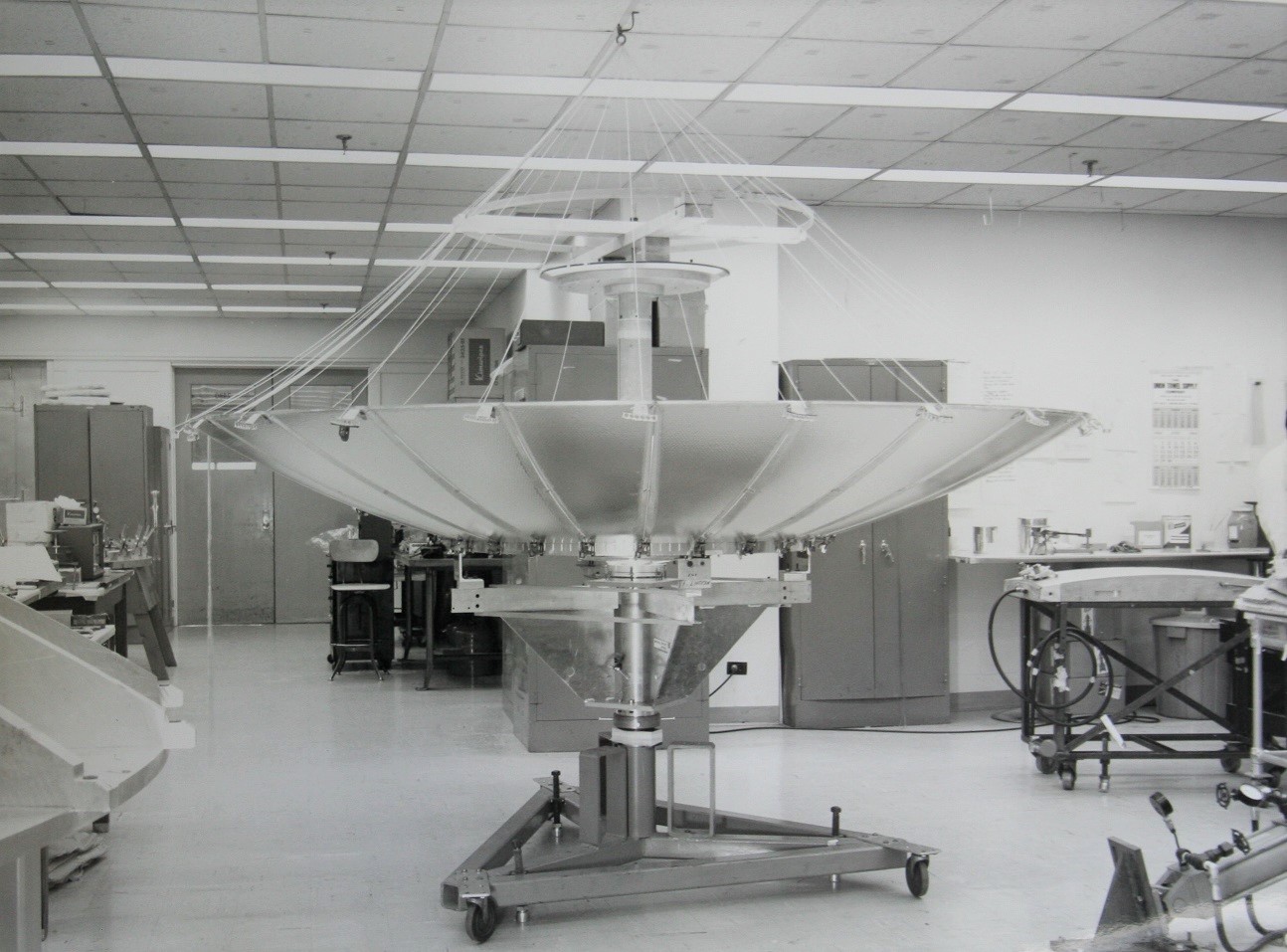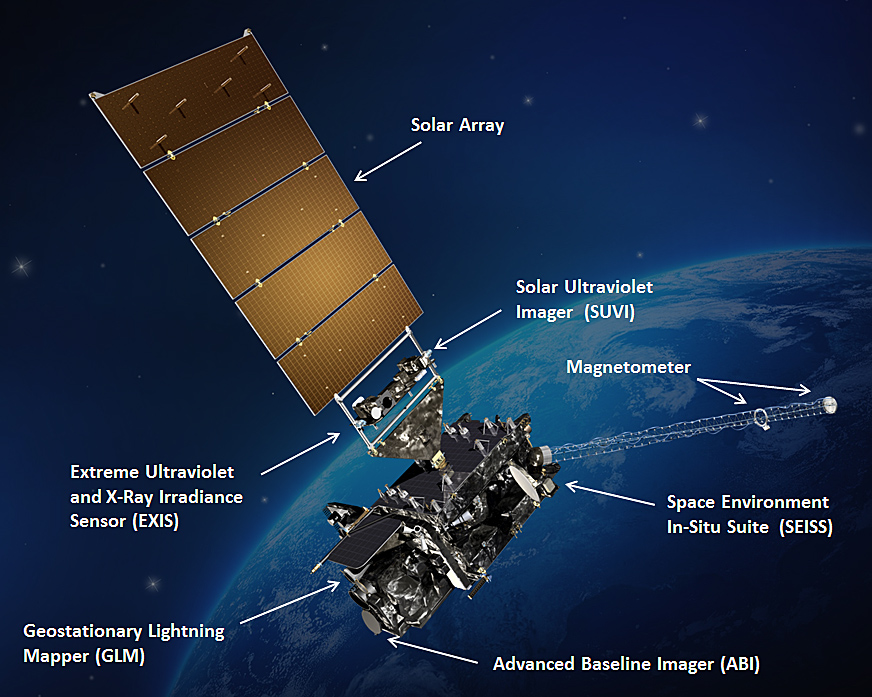|
Total Ozone Mapping Spectrometer
The Total Ozone Mapping Spectrometer (TOMS) was a NASA satellite instrument, specifically a spectrometer, for measuring the ozone layer. Of the five TOMS instruments which were built, four entered successful orbit. The satellites carrying TOMS instruments were: * Nimbus 7; launched October 24, 1978. Operated until 1 August 1994. Carried TOMS instrument number 1. * Meteor (satellite)#Meteor-3-5, Meteor-3-5; launched 15 August 1991. Operated until December 1994. Was the first and last Soviet satellite to carry a USA made instrument. Carried TOMS instrument number 2. * ADEOS I; launched 17 August 1996. Operated until 30 June 1997. Mission was cut short by a spacecraft failure. * TOMS-Earth Probe; launched on July 2, 1996. Operated until 2 December 2006. Carried TOMS instrument number 3. * QuikTOMS; launched 21 September 2001. Suffered launch failure and did not enter orbit. Nimbus 7 and Meteor (satellite)#Meteor-3-5, Meteor-3-5 provided global measurements of column density, tot ... [...More Info...] [...Related Items...] OR: [Wikipedia] [Google] [Baidu] |
TRW Inc
TRW Inc. was an American corporation involved in a variety of businesses, mainly aerospace, electronics, automotive, and credit reporting.http://www.fundinguniverse.com/company-histories/TRW-Inc-Company-History.html TRW Inc. It was a pioneer in multiple fields including electronic components, integrated circuits, computers, software and systems engineering. TRW built many spacecraft, including Pioneer 1, Pioneer 10, and several space-based observatories. It was #57 on the 1986 Fortune 500 list, and had 122,258 employees. The company was called Thompson Ramo Wooldridge Inc., after the 1958 merger of the Ramo-Wooldridge Corporation and Thompson Products. This was later shortened to TRW. The company was founded in 1901 and lasted for just over a century until being acquired by Northrop Grumman in 2002. It spawned a variety of corporations, including Pacific Semiconductors, The Aerospace Corporation, Bunker-Ramo and Experian. Its automotive businesses were sold off by Northro ... [...More Info...] [...Related Items...] OR: [Wikipedia] [Google] [Baidu] |
Spectrometers
A spectrometer () is a scientific instrument used to separate and measure Spectrum, spectral components of a physical phenomenon. Spectrometer is a broad term often used to describe instruments that measure a continuous variable of a phenomenon where the spectral components are somehow mixed. In visible light a spectrometer can separate white light and measure individual narrow bands of color, called a spectrum. A mass spectrometer measures the spectrum of the masses of the atoms or molecules present in a gas. The first spectrometers were used to split light into an array of separate colors. Spectrometers were History_of_spectroscopy, developed in early studies of physics, astronomy, and chemistry. The capability of spectroscopy to determine Analytical_chemistry#Spectroscopy, chemical composition drove its advancement and continues to be one of its primary uses. Spectrometers are used in Astronomical spectroscopy, astronomy to analyze the chemical composition of Astronomical_spe ... [...More Info...] [...Related Items...] OR: [Wikipedia] [Google] [Baidu] |
Spacecraft Instruments
A spacecraft is a vehicle that is designed to fly and operate in outer space. Spacecraft are used for a variety of purposes, including communications, Earth observation, meteorology, navigation, space colonization, planetary exploration, and transportation of humans and cargo. All spacecraft except single-stage-to-orbit vehicles cannot get into space on their own, and require a launch vehicle (carrier rocket). On a sub-orbital spaceflight, a space vehicle enters space and then returns to the surface without having gained sufficient energy or velocity to make a full Earth orbit. For orbital spaceflights, spacecraft enter closed orbits around the Earth or around other celestial bodies. Spacecraft used for human spaceflight carry people on board as crew or passengers from start or on orbit (space stations) only, whereas those used for robotic space missions operate either autonomously or telerobotically. Robotic spacecraft used to support scientific research are spac ... [...More Info...] [...Related Items...] OR: [Wikipedia] [Google] [Baidu] |
Satellite Meteorology
A weather satellite or meteorological satellite is a type of Earth observation satellite that is primarily used to monitor the weather and climate of the Earth. Satellites are mainly of two types: polar orbiting (covering the entire Earth asynchronously) or geostationary (hovering over the same spot on the equator). While primarily used to detect the development and movement of storm systems and other cloud patterns, meteorological satellites can also detect other phenomena such as city lights, fires, effects of pollution, auroras, sand and dust storms, snow cover, ice mapping, boundaries of ocean currents, and energy flows. Other types of environmental information are collected using weather satellites. Weather satellite images helped in monitoring the volcanic ash cloud from Mount St. Helens and activity from other volcanoes such as Mount Etna. Smoke from fires in the western United States such as Colorado and Utah have also been monitored. El Niño and its effects on wea ... [...More Info...] [...Related Items...] OR: [Wikipedia] [Google] [Baidu] |
Scientific Instruments
A scientific instrument is a device or tool used for scientific purposes, including the study of both natural phenomena and theoretical research. History Historically, the definition of a scientific instrument has varied, based on usage, laws, and historical time period. Before the mid-nineteenth century such tools were referred to as "natural philosophical" or "philosophical" apparatus and instruments, and older tools from antiquity to the Middle Ages (such as the astrolabe and pendulum clock) defy a more modern definition of "a tool developed to investigate nature qualitatively or quantitatively." Scientific instruments were made by instrument makers living near a center of learning or research, such as a university or research laboratory. Instrument makers designed, constructed, and refined instruments for purposes, but if demand was sufficient, an instrument would go into production as a commercial product. In a description of the use of the eudiometer by Jan Ingenhousz to ... [...More Info...] [...Related Items...] OR: [Wikipedia] [Google] [Baidu] |
NOAA-20
NOAA-20, designated JPSS-1 prior to launch, is the first of the United States National Oceanic and Atmospheric Administration's latest generation of U.S. polar-orbiting, non-geosynchronous, environmental satellites called the Joint Polar Satellite System. NOAA-20 was launched on 18 November 2017 and joined the Suomi NPP, Suomi National Polar-orbiting Partnership satellite in the same orbit. NOAA-20 operates about 50 minutes behind Suomi NPP, allowing important overlap in observational coverage. Circling the Earth from pole-to-pole, it crosses the equator about 14 times daily, providing full global coverage twice a day. This gives meteorologists information on "atmospheric temperature and moisture, clouds, sea-surface temperature, ocean color, sea ice cover, volcanic ash, and fire detection" so as to enhance weather forecasting including hurricane tracking, post-hurricane recovery by detailing storm damage and mapping of power outages. The project incorporates five instruments, ... [...More Info...] [...Related Items...] OR: [Wikipedia] [Google] [Baidu] |
Suomi NPP
The Suomi National Polar-orbiting Partnership (Suomi NPP), previously known as the National Polar-orbiting Operational Environmental Satellite System Preparatory Project (NPP) and NPP-Bridge, is a weather satellite operated by the United States National Oceanic and Atmospheric Administration (NOAA). It was launched in 2011 and is currently in operation. Suomi NPP was originally intended as a pathfinder for the National Polar-orbiting Operational Environmental Satellite System (NPOESS) program, which was to have replaced NOAA's Polar Operational Environmental Satellites (POES) and the U.S. Air Force's Defense Meteorological Satellite Program (DMSP). Suomi NPP was launched in 2011 after the cancellation of NPOESS to serve as a stop-gap between the POES satellites and the Joint Polar Satellite System (JPSS) which will replace them. Its instruments provide climate measurements that continue prior observations by NASA's Earth Observing System (EOS). Name The satellite is name ... [...More Info...] [...Related Items...] OR: [Wikipedia] [Google] [Baidu] |
Ozone Mapping And Profiler Suite
Ozone Mapping and Profiler Suite (OMPS), is a suite of instruments built by Ball Aerospace that measure the global distribution of ozone and, less frequently, how it is distributed vertically within the stratosphere. The suite flies on the Suomi NPP and NOAA-20 (formerly JPSS-1) satellites along with several other instruments. It had been intended to also fly on the NPOESS, for which the NPP was a preparatory project, but the dissolution of that project was announced in 2010. OMPS launched on October 28, 2011. The three components of the suite are Nadir, which looks straight down, Limb, which looks down at an angle, and the Main Electronics Box (MEB), which controls Nadir, Limb and communication. Nadir and Limb are on the Suomi NPP, while the MEB is on NOAA-20. Nadir itself has two spectrometers: a profiler and a mapper. It is included on NOAA-21 NOAA-21, designated JPSS-2 prior to launch, is the second satellite in National Oceanic and Atmospheric Administration (NOAA)'s ... [...More Info...] [...Related Items...] OR: [Wikipedia] [Google] [Baidu] |
Aura (satellite)
Aura (EOS CH-1) is a multi-national NASA scientific research satellite in orbit around the Earth, studying the Earth's ozone layer, air quality and climate. It is the third major component of the Earth Observing System (EOS) following on Terra (satellite), Terra (launched 1999) and Aqua (satellite), Aqua (launched 2002). Aura follows on from the Upper Atmosphere Research Satellite, Upper Atmosphere Research Satellite (UARS). Aura is a joint mission between NASA, the Netherlands, Finland, and the U.K. The Aura spacecraft is healthy and is expected to operate until at least 2028, possibly beyond. The name "Aura (paranormal), Aura" comes from the Latin word for air. The satellite was launched from Vandenberg Air Force Base on July 15, 2004, aboard a Delta II, Delta II 7920-10L Launch vehicle, rocket. The Aura spacecraft has a mass of about . The body is long with the extended single solar panel about long. Aura originally flew in a Sun-synchronous orbit, in formation with thr ... [...More Info...] [...Related Items...] OR: [Wikipedia] [Google] [Baidu] |
Minotaur-C
Minotaur-C (''Minotaur Commercial''), formerly known as Taurus or Taurus XL, is a four Multistage rocket, stage solid rocket , solid fueled launch vehicle built in the United States by Orbital Sciences Corporation, Orbital Sciences (now Northrop Grumman) and launched from SLC-576E at California's Vandenberg Air Force Base. It is based on the air-launched Northrop Grumman Pegasus, Pegasus rocket from the same manufacturer, utilizing a "zeroth stage" in place of an airplane. The Minotaur-C is able to carry a maximum payload of around 1458 kg into a low Earth orbit (LEO). First launched in 1994, it has successfully completed seven out of a total of ten military and commercial missions. Three of four launches between 2001 and 2011 ended in failure, including the 24 February 2009 launch of the Orbiting Carbon Observatory mission and the 4 March 2011 launch of the Glory (satellite), Glory mission, which resulted in losses totalling US$700 million for NASA (excluding the cost of the ro ... [...More Info...] [...Related Items...] OR: [Wikipedia] [Google] [Baidu] |





